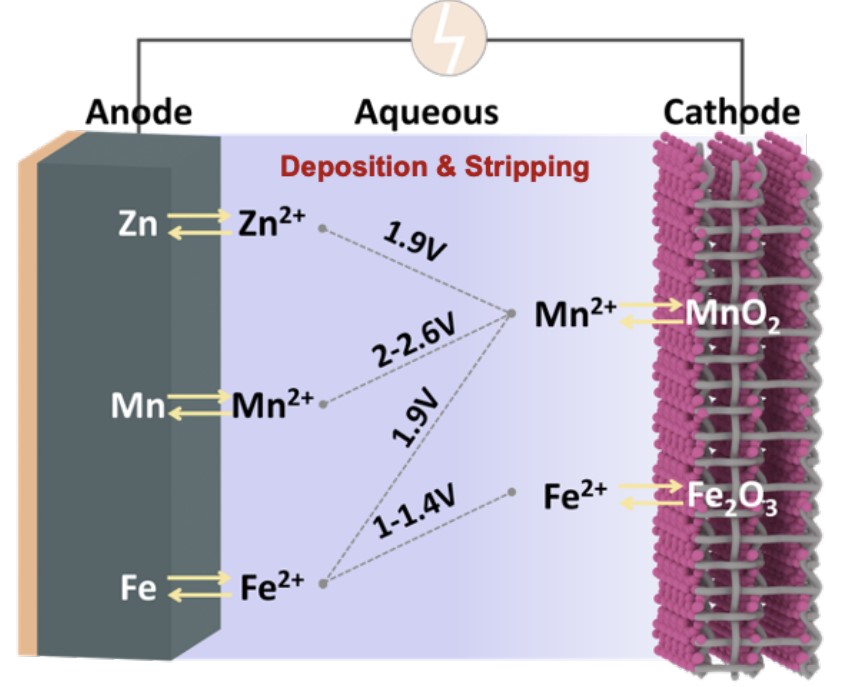Aqueous Batteries

Example schematic of zinc manganese dioxide aquous battery
The Aqueous Battery Consortium (ABC) will generate fundamental breakthroughs to enable aqueous batteries for long-duration energy storage with a potential of 10x reduction in the cost floor compared with lithium-ion batteries, while ensuring excellent safety and scalability for global grid storage. Decarbonizing the electric grid using renewable electricity requires long-duration storage capacity of at least several hundred TWh. The organic electrolyte-based lithium batteries that dominate electrical transportation present challenges when used in long-duration storage due to resource availability, safety, and cost. Likewise, today’s commercial aqueous rechargeable batteries (e.g., lead acid, Ni-Cd and Ni metal hydrides) do not meet the scale and cost needed for long-duration storage.
Our group contributes to the mission of this collaborative hub by researching strategies to optimize electrodeposition and stripping battery systems. Specifically, we are interested in studying the fundamental processes that occur when Zinc is electrodeposited at anode current collectors and Manganese Dioxide (MnO2) is electrodeposited at cathode current collectors in aqueous electrolyte systems. We can contribute to the next generation of renewable energy storage by carefully selecting and tuning individual parameters towards improved battery performance.
